AI/ML Framework
- Adaptive algorithms trained on customer-specific datasets
- Physics-informed models governed by physical laws
- Auto-parameterization links geometry with performance targets
- Generative AI produces feasible designs within defined constraints
What Does AI/ML Framework Do?
MeshWorks’ AI/ML module is a robust, adaptive framework that integrates advanced neural network architectures—such as CNN, PINN, UNET, GNN, encoders, and decoders—along with genetic algorithms and approximation models. These models can be continuously trained using customer-specific datasets to generate rapid, reliable, and customized design insights. The system blends data-driven intelligence with physics-based constraints to deliver actionable outcomes tailored to real-world engineering challenges.

AI-Guided Early-Stage Design
MeshWorks’ built-in design advisors provide intelligent guidance during the concept phase, improving efficiency and decision-making.

High Predictive Accuracy
The use of appropriate AI/ML models enhances prediction reliability across multiple simulation objectives.

Augmented Dataset Creation
Parametric CAE integration supports the generation of large-scale, multi-sample datasets—ideal for data-scarce environments.
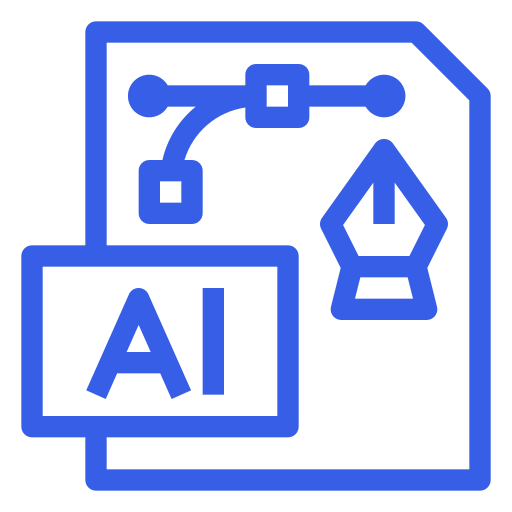
Accelerated Iteration Cycles
Generative AI techniques significantly reduce design iteration timelines, enabling faster convergence to optimized solutions.
Take a quick tour of
AI-ML Framework
Features of AI/ML Framework
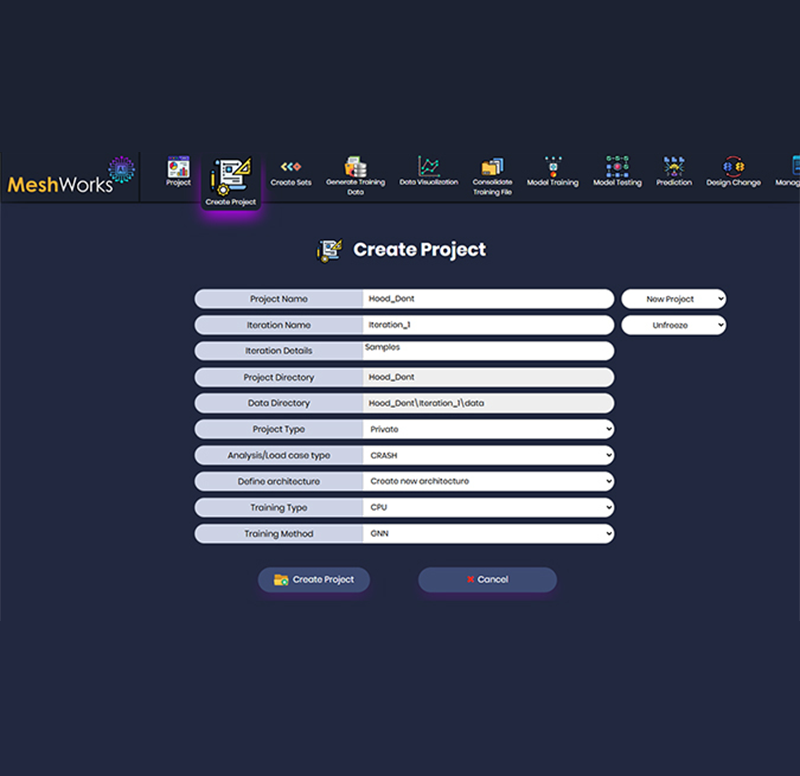
AI/ML Project Setup
Supports the creation of new or existing projects using a range of neural network architectures including CNN and GNN.
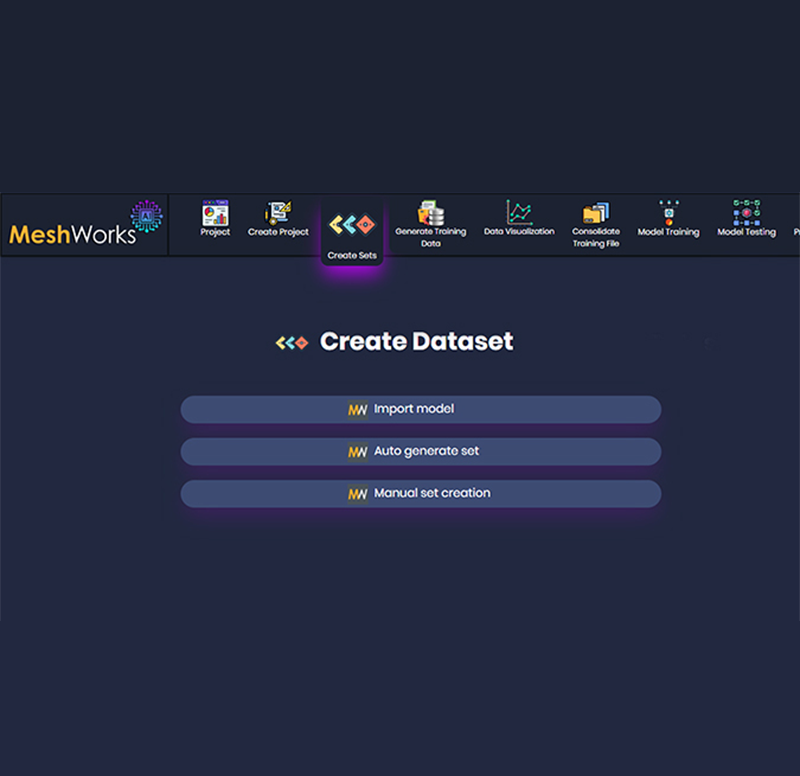
Multi-Set Management
Allows users to generate and manage multiple model sets to support comparative learning and testing.
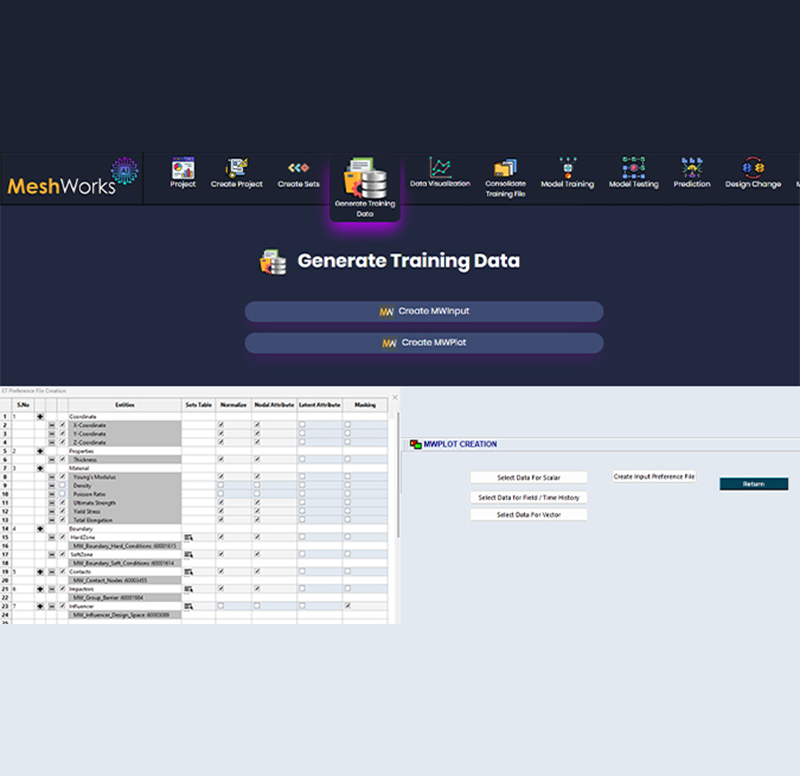
Training Data Preparation
Automates the creation of essential MeshWorks input files (ET, EL, MWPLOT) required for AI/ML training.
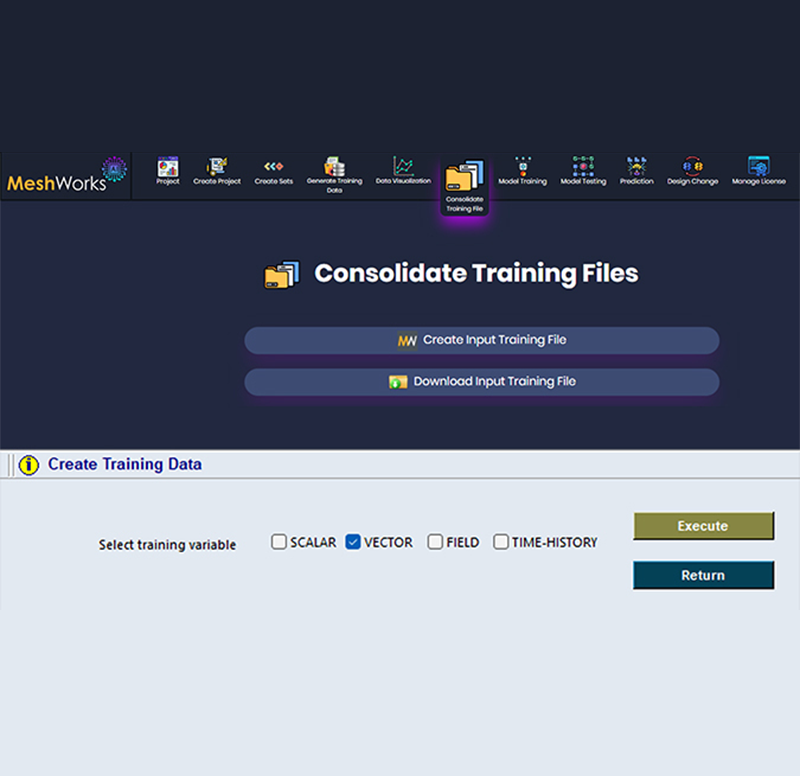
Training File Consolidation
Merges multiple input files into a unified dataset, streamlining the training process.
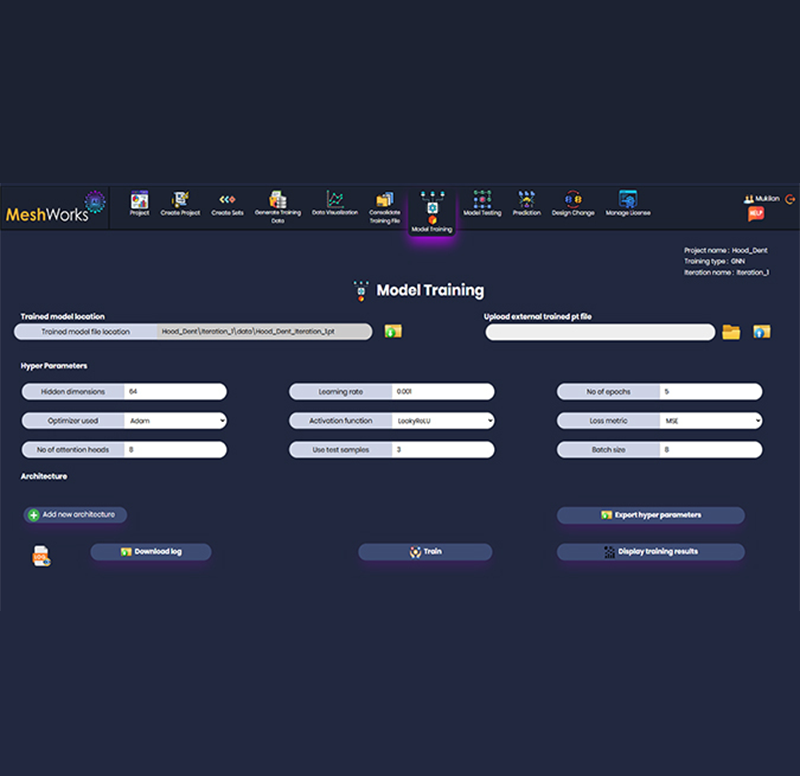
Model Training Utility
Utilizes consolidated files and input hyperparameters to train selected AI/ML models efficiently.

Predictive Capability
Post-training, the model accurately forecasts simulation results for the design under evaluation.
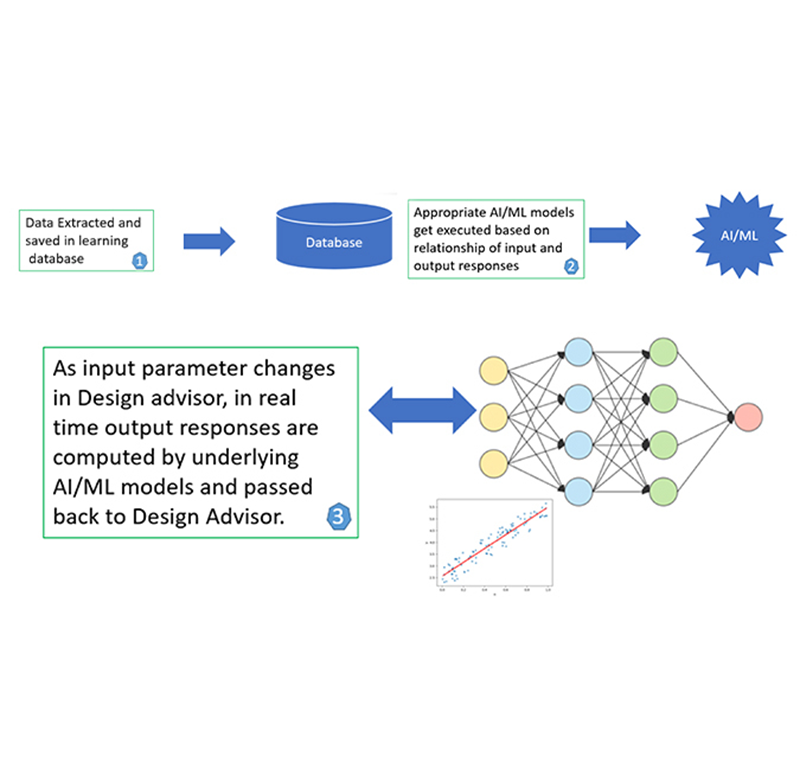
Parameter Library Generation
Automatically captures and stores component-wise model parameters for quick reference and reuse.
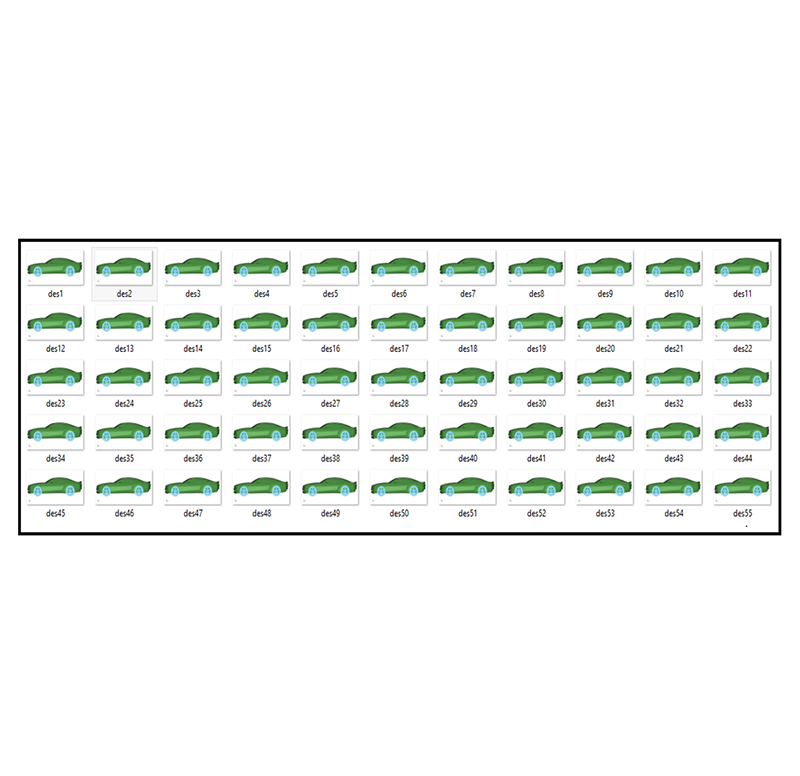
Generative Geometry Creation
AI algorithms synthesize production-ready geometries from initial design inputs, supporting rapid concept development.
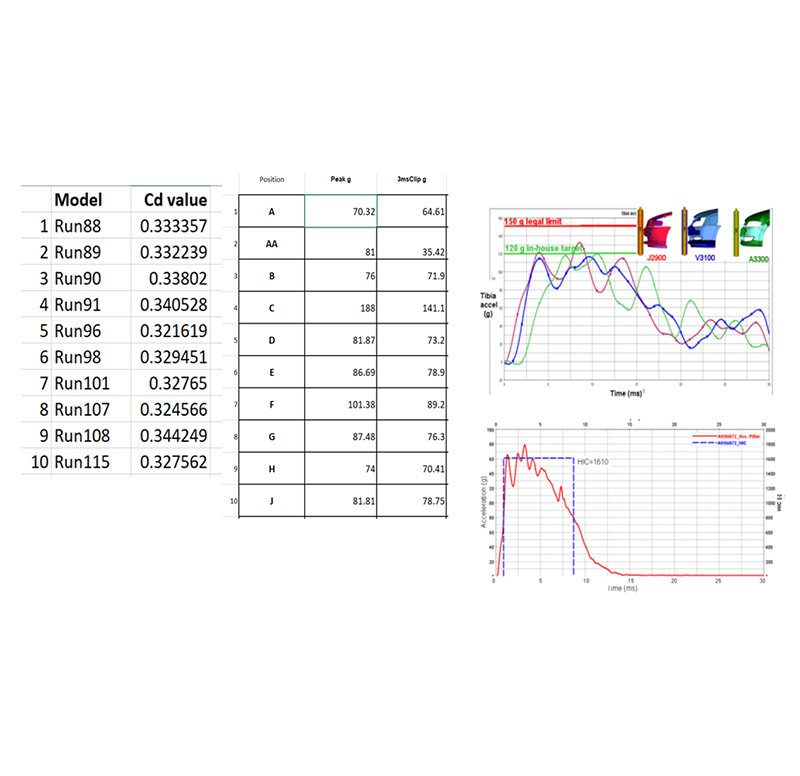
Comprehensive Output Prediction
Delivers predictions across scalar, vector, tensor, temporal, and matrix data – enabling full-spectrum CAE insights.
Get a Closer Look at DEP MeshWorks
Get all the details about our CAE platform’s capabilities, technical specifications,
and success stories.
MeshWorks Uniqueness
MeshWorks simplifies the application of machine learning for CAE engineers through intuitive operation modes like ‘Power User Mode’ and ‘Developer Mode.’ These features, combined with its parametric CAE backbone, enable the generation of extensive training datasets, even in scenarios with limited in-house data. By tightly integrating simulation data and machine learning, MeshWorks ensures that AI-driven design and prediction processes remain fast, accurate, and highly applicable to real-world engineering challenges.

Physics-Integrated Machine Learning
Combines traditional ML with physics-based modeling to improve the realism and reliability of predictions.

Rapid Design Evaluation
Enables quick assessments and informed decision-making during time-constrained development cycles.
Model-to-Task Matching
Selects and applies the most suitable AI/ML architecture based on the specific application or domain objective.

Production-Ready Design Output
Transforms early-stage concepts into manufacturable designs, guided by AI-generated geometry and performance constraints.
Technical Brief
Deep dive into the technical strengths of MeshWorks AI/ML functions with comprehensive detailing using explanatory videos

Download Our AI/ML Resources
DEP’s AI/ML Solutions enhance vehicle engineering by delivering predictive analytics, optimized system design, and efficient validation workflows through AI-powered CAE.
-
Predictive simulation results analysis
-
Vehicle layout and architecture optimization
-
Streamlined validation and testing processes

 Download PDF
Download PDF
Resources
Explore our library of resources to learn more
Ready to Transform Your
Product Development?
Join leading manufacturers who use MeshWorks to accelerate innovation, reduce development costs, and bring better products to the market faster.











